|
America |
|||
|
|||
|
End of WWII |
|||
|
 |
|
The Atomic Bomb code Name "Fat Man" Dropped on Nagasaki 09AUG1945
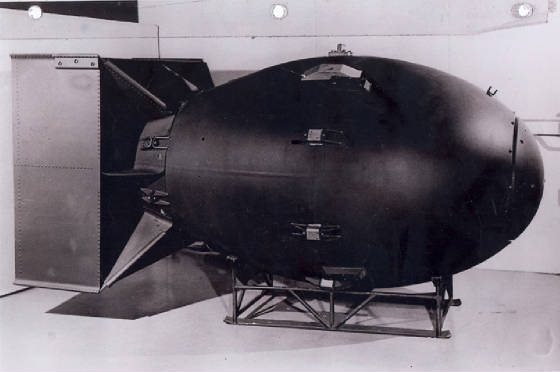 Atomic bomb code name "Little Boy" Dropped on Hiroshima 06AUG1945
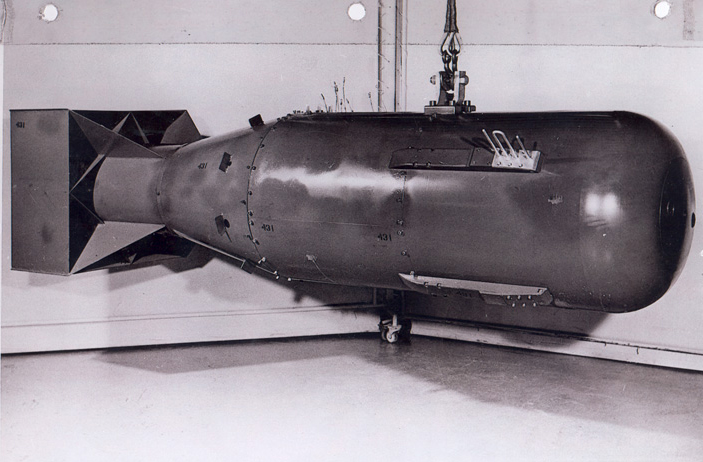 During the Spring and summer of 1945, Truman had verbally confirmed proposals presented to him by
Stimson and Byrnes to use the bomb. According to General Groves, Truman's decision "was one of noninterference--basically
a decision not to upset existing plans." Lt. Gen. Carl Spaatz, the commander of the newly created U.S. Army Strategic Air
Forces in the Pacific, requested a written order authorizing the use of the bomb. After long-distance communications with
Stimson, who was with Truman in Potsdam Gen. Thomas Handy, the Acting Army Chief of Staff in The atomic bombings of Hiroshima and Nagasaki were nuclear attacks during World War II against the Empire of Japan
by the United Sates of American under U.S. President Harry S. Truman. After six months of intense firebombing of 67 other
Japanese cities, the nuclear weapon “Little Boy” was dropped on the city of Hiroshima on August 6, 1945, followed
on August 9, 1945 by the detonation of the “Fat Man” nuclear bomb over the city of Nagasaki. These, to date, are
the only uses of nuclear weapons in warfare. Target Average of 93 Dead/Missing 70,000-80,000 35,000-40,000 83,000 1,850 Wounded 70,000 40,000 102,000 1,830 Population Density 35,000 per sq mile 65,000 per sq mile 130,000 per sq mile ? Total Casualties 140,000-150,000 75,000-80,000 185,000 3,680 Area Destroyed 4.7 sq mile 1.8 sq mile 15.8 sq mile 1.8 sq mile Attacking Platform 1 B-29 1 B-29 334 B-29s B-29s Weapon(s) 'Little Boy' 15 kT (15,000 tons of TNT) 'Fat Man' 21 kT (21,000 tons of TNT) 1,667 tons 1,129 tons
 Manufacturer: Boeing Aircraft
Company Assembler: Glenn L. Martin
Company, AAF Serial Number: 44-86292 Engine: Four Wright
R-3350-57 Cyclone Horsepower: 2,200 hp/engine
Wingspan: 141 ft. 3 in.
Height: 29 ft. 7 in.
Weight: #70,140 empty Propellers: Curtiss Electric
four-blade 16 ft. 7 in. Maximum Speed: 360 mph (576
km/h) at 25,000 ft. Stalling Speed: 125 mph Range: 3,250 miles
Loaded Crew: 12 (usually
10) Armament: 20,000 bomb
(other B29s were equipped with 10 machine guns and a 1x20 mm cannon) The B-29 Superfortress bomber was the single most complicated and expensive
weapon produced by the
Six days after the detonation over Japanese Upper Ranks aboard the USS Missouri
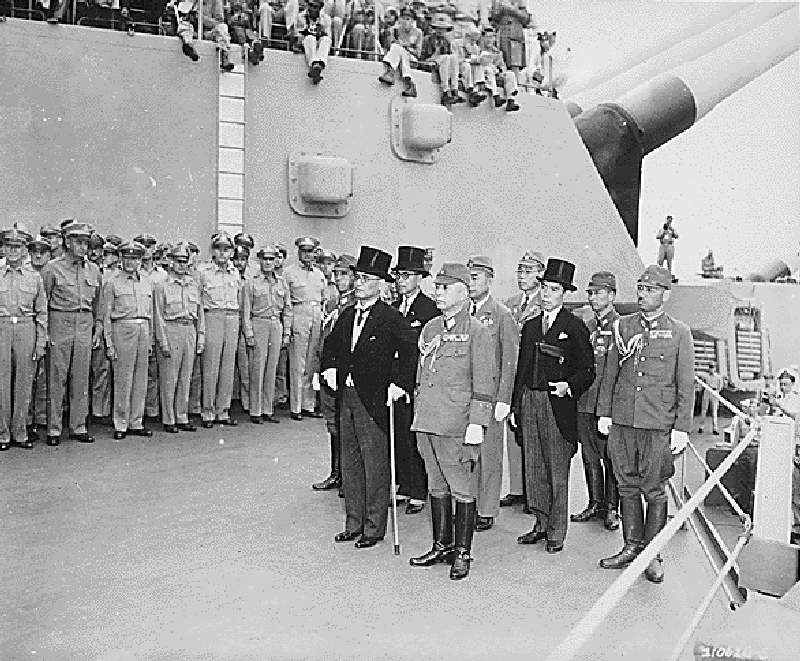 Gen Douglass MacArthur Signs the Formal Surrender
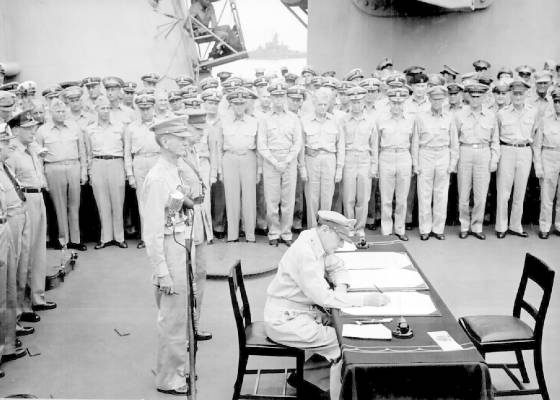 Japan Signs the Formal Surrender on board of the USS Missouri
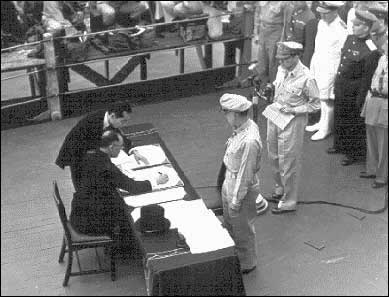 |
||||||||||||||||||||||||||||||||||||||||||||||||||||||||||||||||||||
|
|
 |
|
|